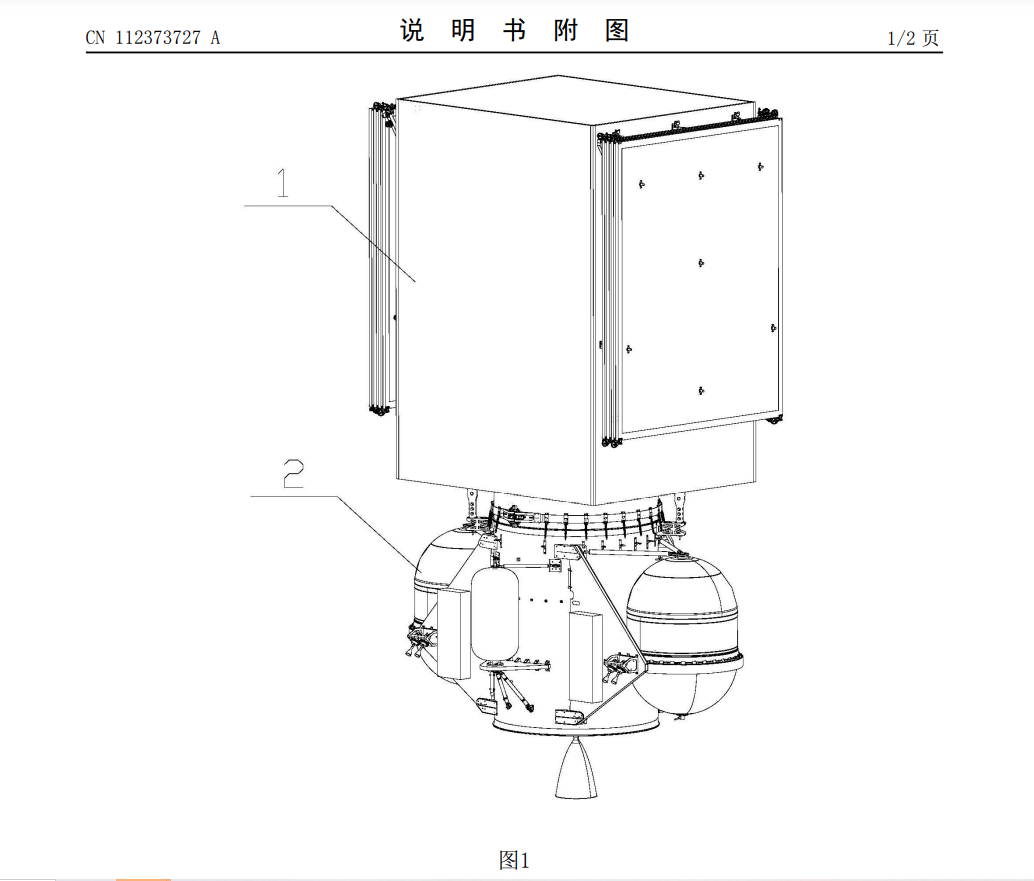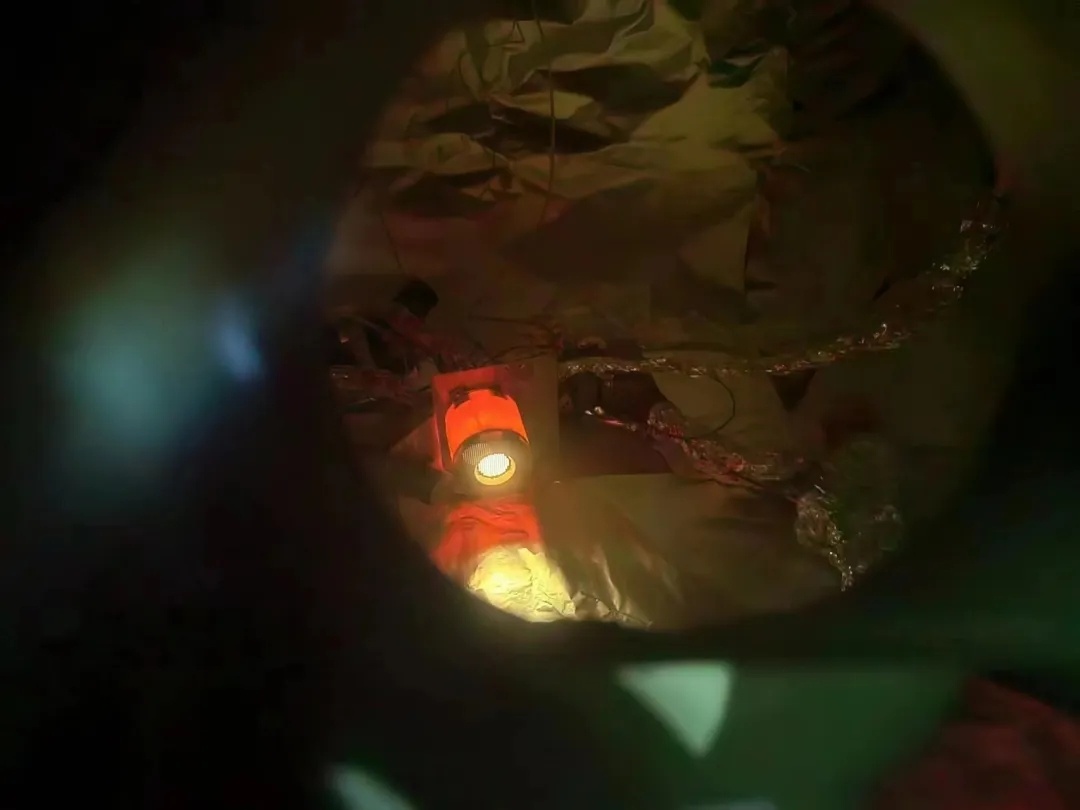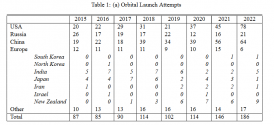Xi'an Space Engine Company Limited delivered 1000+ engines in 2022..
You are using an out of date browser. It may not display this or other websites correctly.
You should upgrade or use an alternative browser.
You should upgrade or use an alternative browser.
China's Space Program Thread II
- Thread starter Blitzo
- Start date
escobar
Brigadier
The AsiaPacific-6E (亚太-6E) communications satellite, scheduled for launch tomorrow, features an electric propulsion system (Hall thrusters) as well as a detachable chemical propulsion module, a configuration that is a first for China. The chemical propulsion module is responsible for sending the satellite to its initial low-earth orbit, after which the module will detach from the satellite. From there, the electric propulsion system will take over to send the satellite (now much lighter without the chemical propulsion module) into its final geostationary orbit, a process that will take six to eight months.



by78
General
The Lanzhou Research Institute of Space Physics and Technology (aka No. 510 Institute) has successfully completed the first test run of an iodine radio-frequency ion thruster.

【510所突破碘工质射频离子电推进技术:首次射频推力器和碘工质贮供单元联试点火成功】2022年12月31日,兰州空间技术物理研究所研制的碘工质射频离子推力器与贮供单元首次联试点火成功。射频离子电推进具有高总冲、长寿命、适用多元推进剂、推力连续精确可调等优势,在低轨高密度星座和空间科学等领域具有良好的应用前景。近年来,在商业航天低成本、高效益的发展需求牵引下,基于新型推进剂的射频离子电推进技术成为前沿热点。碘工质价格低廉、存储密度高、可适应异形结构贮供单元,在提升系统集成度、提高整星功能密度、降低航天器运行成本、拓展电推进应用场景等方面优势显著,已成为最具前景的新型推进剂之一。试验结果显示,在射频功率26W、碘工质流率50μg/s条件下达到1mN推力、2050s比冲的实测指标,核心指标比肩国际先进的美国BIT-3碘工质射频离子电推进系统。研究所碘工质射频离子电推进技术实现突破,取得了重要的阶段性成果。后续,510所将重点针对碘工质射频离子电推进系统集成化设计、热量控制与管理、冷态快速启动、产品稳定性提升、环境适应性设计等技术持续开展联合攻关,尽快完成系统级工程样机研制并实现飞行验证。
On December 31, 2022, the Lanzhou Research Institute of Space Physics and Technology successfully completed the first ignition test of the iodine radio frequency ion thruster and its storage supply unit. Radio-frequency ion electric propulsion has the advantages of high total impulse, long life, applicable multiple propellants, and continuous and precise thrust adjustment. It has good application prospects in the fields of low-orbit high-density constellations and space science. In recent years, driven by the low-cost and high-efficiency development needs of commercial aerospace, radio frequency ion electric propulsion technology based on new propellants has become a frontier hotspot. Iodine working fluid is low in price, high in storage density, and can be adapted to storage and supply units with special-shaped structures. One of Prospect's new propellants. The test results show that under the conditions of radio frequency power of 26W and iodine working medium flow rate of 50μg/s, the measured indicators of 1mN thrust and 2050s specific impulse are achieved, and the core indicators are comparable to the internationally advanced American BIT-3 iodine working medium radio frequency ion electric propulsion system. The Institute achieved a breakthrough in the iodine working substance radio frequency ion electric propulsion technology and achieved important phased results. In the future, the 510 Institute will continue to carry out joint research on technologies such as the integrated design of iodine working medium radio frequency ion electric propulsion system, heat control and management, cold state quick start, product stability improvement, and environmental adaptability design, and complete the system level project as soon as possible Prototype development and flight verification.

Zhurong didn't fail - it achieved it's primary engineering and scientific goals and exceeded it's expected operational life of 3 months by over a year and a half. By all accounts, it's a stunning success to accomplish such a hard task on the first try in a single mission
You missed the meaning of my comment. Yes, we all know it accomplished it's main objective. However, nothing lasts forever; not even Voyager 1 and 2. The point of my comment is that the failure of Zhurong to continue well past it's designed lifespan is not a big deal. If it failed, it failed. The CNSA have plenty of other programs lined up.
You missed the meaning of my comment. Yes, we all know it accomplished it's main objective. However, nothing lasts forever; not even Voyager 1 and 2. The point of my comment is that the failure of Zhurong to continue well past it's designed lifespan is not a big deal. If it failed, it failed. The CNSA have plenty of other programs lined up.
your choice of word 'failure' is incorrect and an oxymoron ('failure of success' where success is defined by operational life exceeding the designed life). Just like a war, whether a mission (or war) is successful or failure depends on the objectives specified before the mission. It is not being sensitive or hurting one's pride but rather only your very poor choice of word.
It is possible that given your limited vocabulary, 'failure'meant component breakdown or you really want to say that NOTHING can ever be 'successful' because for something to be successful, it must be eternal and thus nothing successful is ever observable/confirmable. If that is how your brain thinks, I feel very sorry for you.
One thing for sure, your comment is a huge failure and Zhurong is a huge success.
escobar
Brigadier
The US is skyrocketing. I assume the bulk of these increases come from SpaceXMass (tonnes) of 2022 payloads launched by CN: 197,21t.
Payloads launched: 188
View attachment 105444View attachment 105445View attachment 105446
escobar
Brigadier
CASC 2023 "Blue book": Structural design of the Long March 9 has been finalised and will have a reusable first stage,
Yes, SpaceX launches for Starlink accounts for most of that.The US is skyrocketing. I assume the bulk of these increases come from SpaceX



